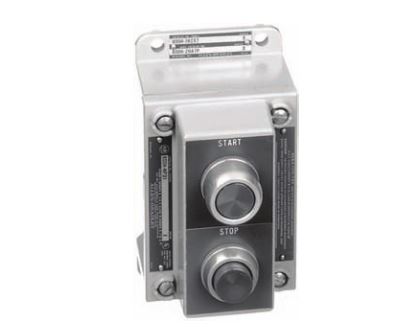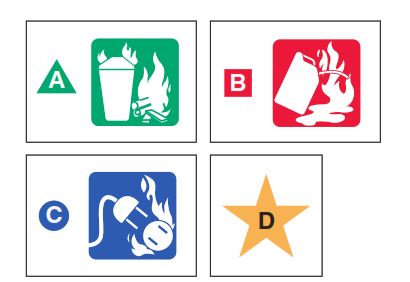OCCUPATIONAL SAFETY AND HEALTH ADMINISTRATION (OSHA)
In 1970, Congress created a regulatory agency known as the Occupational Safety and Health Administration (OSHA). The purpose of OSHA is to assure safe and healthful working conditions for working men and women by authorizing enforcement of standards developed under the Act, by encouraging and assisting state governments to improve and expand their own occupational safety and health programs, and by providing for research, information, education, and training in the field of occupational health and safety.
OSHA inspectors check on companies to make sure they are following prescribed safety regulations. OSHA also inspects and approves safety products. OSHA’s electrical standards are designed to protect employees exposed to dangers such as electric shock, electrocution, fires, and explosions.
NATIONAL ELECTRICAL CODE (NEC)
The National Electrical Code (NEC) comprises a set of rules that, when properly applied, are intended to provide a safe installation of electrical wiring and equipment. This widely adopted minimum electrical safety standard has as its primary purpose “the practical safeguarding of persons and property from hazards arising from the use of electricity.” Standards contained in the NEC are enforced by being incorporated into the different city and community ordinances that deal with electrical installations in residences, industrial plants, and commercial buildings. The NEC is the most widely adopted code in the world and many jurisdictions adopt it in its entirety without exception or local amendments or supplements.
An “Article” of the Code covers a specific subject. For example, Article 430 of the NEC covers motors and all associated branch circuits, overcurrent protection, overload, and so on. The installation of motor control centers is covered in Article 409, and air-conditioning equipment is covered in Article 440. Each Code rule is called a “Code Section.” A Code Section may be broken down into subsections. For example, the rule that requires a motor disconnecting means be mounted within sight of the motor and driven machinery is con-tained in Section 430.102 (B). “In sight” is defined by the Code as visible and not more than 50 feet in distance (Article 100 definitions).

Article 430 on motors is the longest article in the Code. One of the reasons for this is that the characteristics of a motor load are quite different from heating or incandescent lighting loads and so the method of protecting branch circuit conductors against excessive current is slightly different. Non-motor branch circuits are protected against overcurrent, whereas motor branch circuits are protected against overload conditions as well as groundfaults and short circuits. The single-line diagram of Figure 1-14 illustrates some of the motor terminology used throughout the Code and by motor control equipment manufacturers.

The use of electrical equipment in hazardous locations increases the risk of fire or explosion. Hazardous locations can contain gas, dust (e.g., grain, metal, wood, or coal), or flying fibers (textiles or wood products). A substantial part of the NEC is devoted to the discussion of hazardous locations, because electrical equipment can become a source of ignition in these volatile areas. Articles 500 through 504 and 510 through 517 provide classification and installation standards for the use of electrical equipment in these locations. Explosion-proof apparatus, dust-ignition-proof equipment, and purged and pressurized equipment are examples of protection techniques that can be used in certain hazardous (classified) locations. Figure 1-15 shows a motor start/stop station designed to meet hazardous location requirements.
NATIONAL FIRE PROTECTION ASSOCIATION (NFPA)
The National Fire Protection Association (NFPA) develops codes governing construction practices in the building and electrical trades. It is the world’s largest and most influential fire safety organization. NFPA has published almost 300 codes and standards, including the National Electrical Code, with the mission of preventing the loss of life and property. Fire prevention is a very important part of any safety program. Figure 1-16 illustrates some of the common types of fire extinguishers and their applications. Icons found on the fire extinguisher indicate the types of fire the unit is intended to be used on.
It is important to know where your fire extinguishers are located and how to use them. In case of an electrical fire, the following procedures should be followed:
- Trigger the nearest fire alarm to alert all personnel in the workplace as well as the fire department.
- If possible, disconnect the electric power source.
- Use a carbon dioxide or dry-powder fire extinguisher to put out the fire. Under no circumstances use water, as the stream of water may conduct electricity through your body and give you a severe shock.
- Ensure that all persons leave the danger area in an orderly fashion.
- Do not reenter the premises unless advised to do so.
There are four classes of fires, categorized according to the kind of material that is burning (see Figure 1-16):- Class A fires are those fueled by materials that, when they burn, leave a residue in the form of ash, such as paper, wood, cloth, rubber, and certain plastics.
- Class B fires involve flammable liquids and gases, such as gasoline, paint thinner, kitchen grease, propane, and acetylene.
- Class C fires involve energized electrical wiring or equipment such as motors and panel boxes.
- Class D fires involve combustible metals such as magnesium, titanium, zirconium, sodium, and potassium.

NATIONALLY RECOGNIZED TESTING LABORATORY (NRTL)
Article 100 of the NEC defines the terms “labeled” and “listed,” which are both related with product evaluation. Labeled or listed indicates the piece of electrical equipment or material has been tested and evaluated for the purpose for which it is intended to be used. Products that are big enough to carry a label are usually labeled. The smaller products are usually listed. Any modification of a piece of electrical equipment in the field may void the label or listing.
In accordance with OSHA Safety Standards, a Nationally Recognized Testing Laboratory (NRTL) must test electrical products for conformity to national codes and standards before they can be listed or labeled. The biggest and best-known testing laboratory is the Under-writers’ Laboratories, identified with the UL logo shown in Figure 1-17. The purpose of the Underwriters’ Labo-ratories is to establish, maintain, and operate laboratories for the investigation of materials, devices, products, equipment, construction, methods, and systems with regard to hazards affecting life and property.

NATIONAL ELECTRICAL MANUFACTURERS ASSOCIATION (NEMA)
The National Electrical Manufacturers Association (NEMA) is a group that defines and recommends safety standards for electrical equipment. Standards established by NEMA assist users in proper selection of industrial control equipment. As an example, NEMA standards provide practical information concerning the rating, testing, performance, and manufacture of motor control devices such as enclosures, contactors, and starters.
INTERNATIONAL ELECTROTECHNICAL COMMISSION (IEC)
The International Electrotechnical Commission (IEC) is a Europe-based organization made up of national committees from more than 60 countries. There are basically two major mechanical and electrical standards for motors: NEMA in North America and IEC in most of the rest of the world. Dimensionally, IEC standards are expressed in metric units. Though NEMA and IEC standards use different units of measurements and terms, they are essentially
analogous in ratings and, for most common applications, are largely interchangeable. NEMA standards tend to be more conservative—allowing more room for “design interpretation,” as has been U.S. practice. Conversely, IEC standards tend to be more specific, more categorized— some say more precise—and designed with less over current tolerance. As an example, a NEMA-rated motor starter will typically be larger than its IEC counterpart.
INSTITUTE OF ELECTRICAL AND ELECTRONICS ENGINEERS (IEEE)
The Institute of Electrical and Electronics Engineers (IEEE) is a technical professional association whose primary goal is to foster and establish technical developments and advancements in electrical and electronic standards. IEEE is a leading authority in technical areas. Through its technical publishing, conferences, and consensus-based standards activities, the IEEE produces more than 30 percent of the world’s published literature in electrical and electronic engineering. For example, IEEE Standard 142 provides all the information you need for a good grounding design.